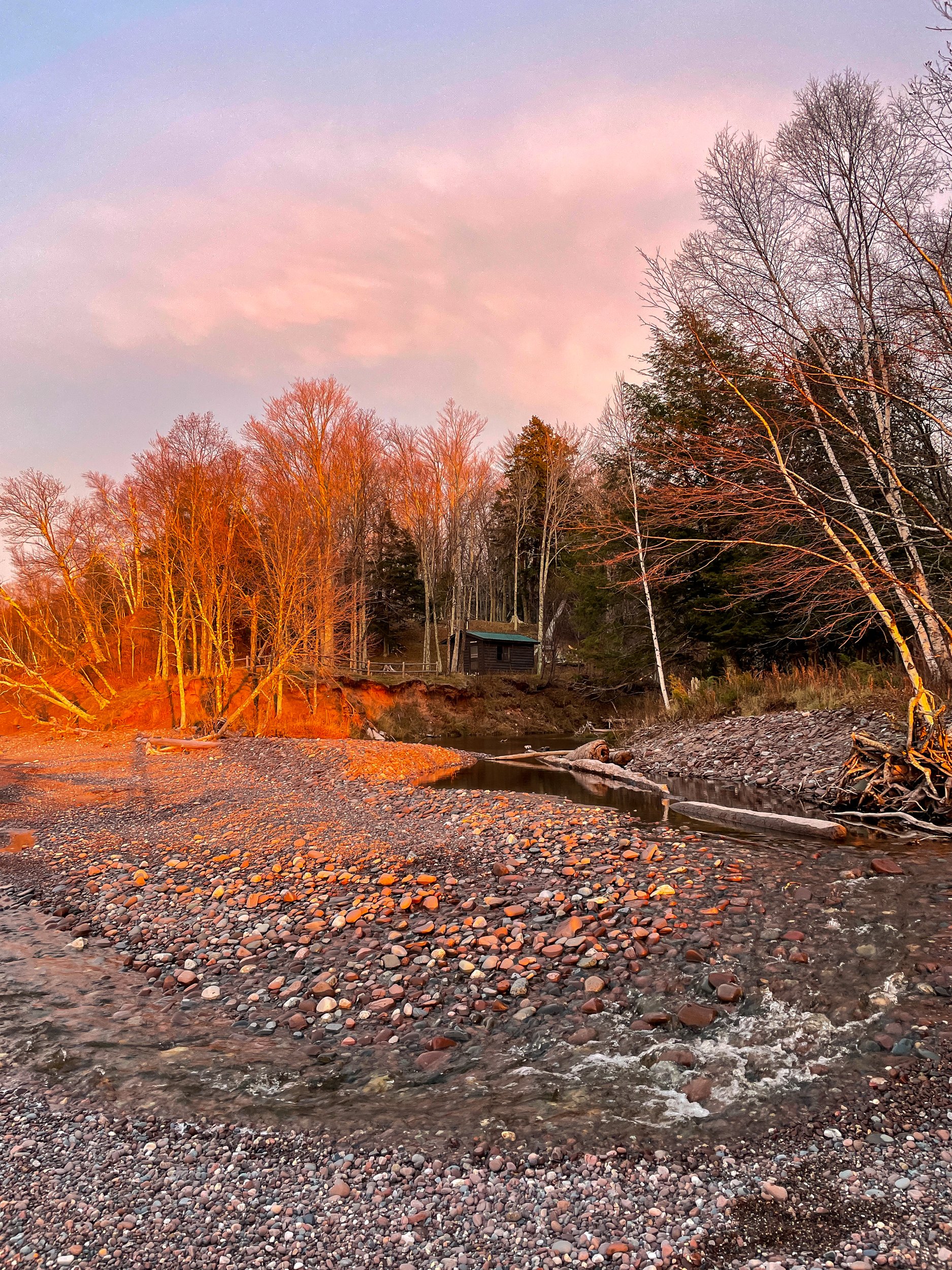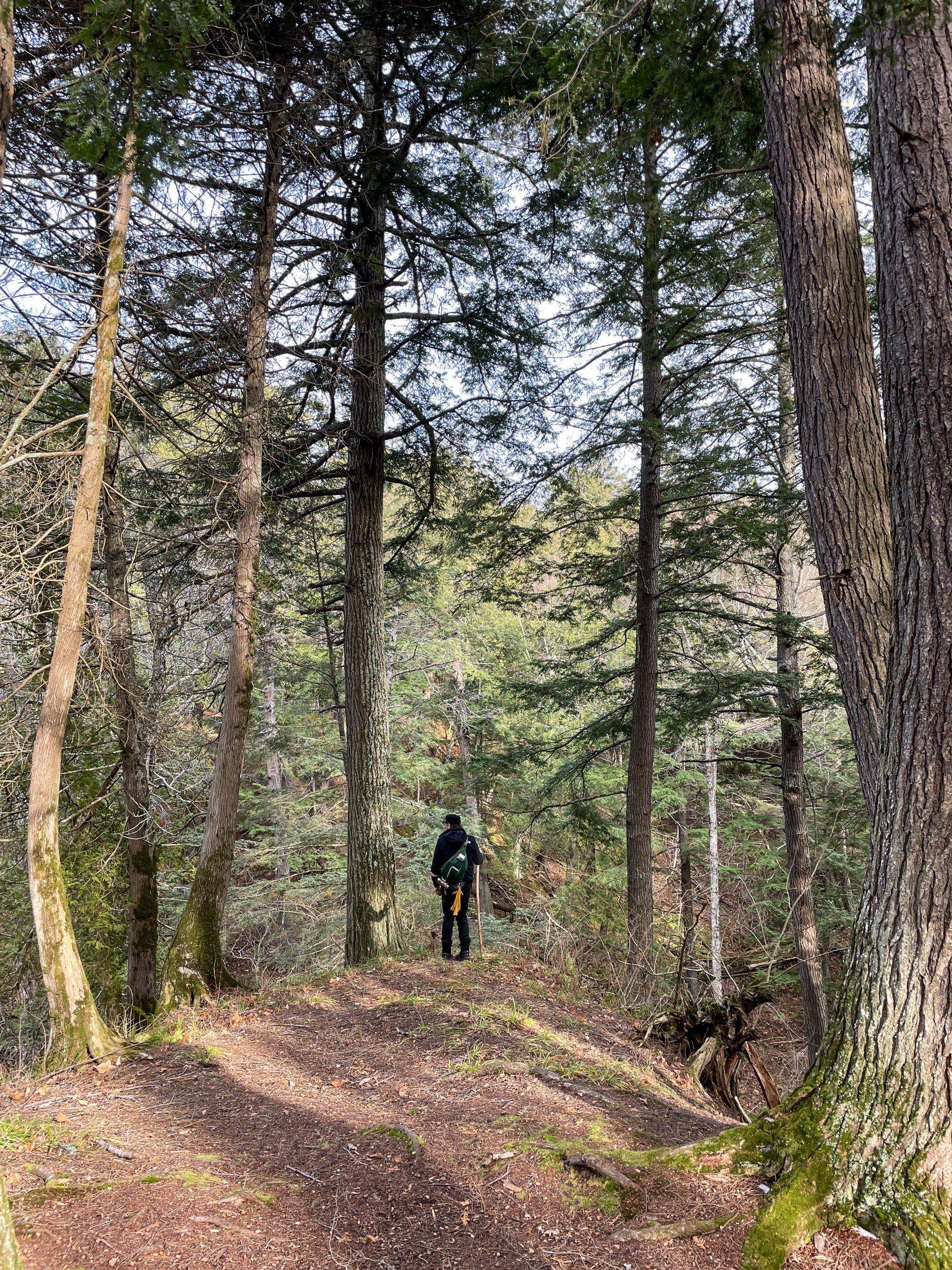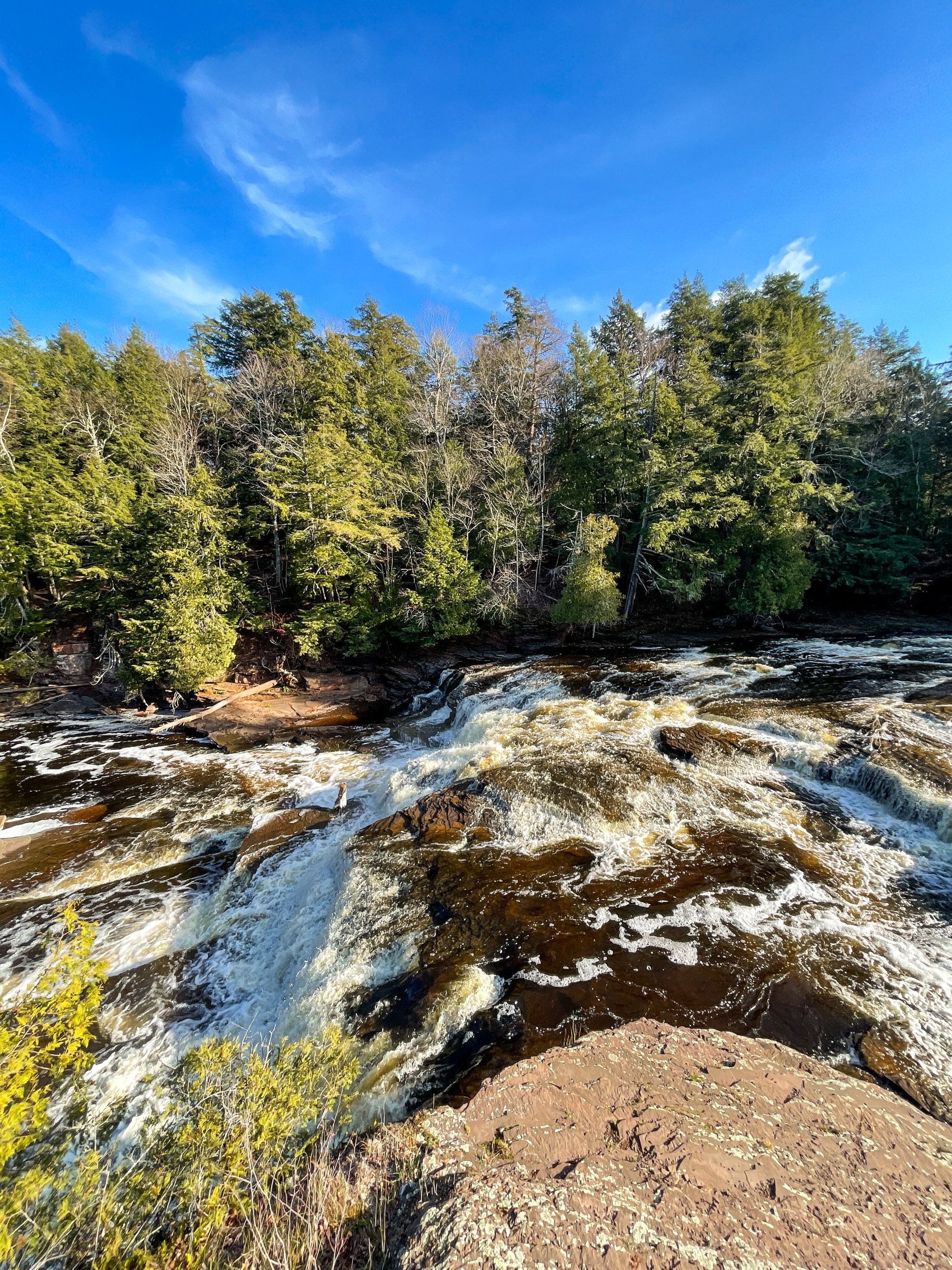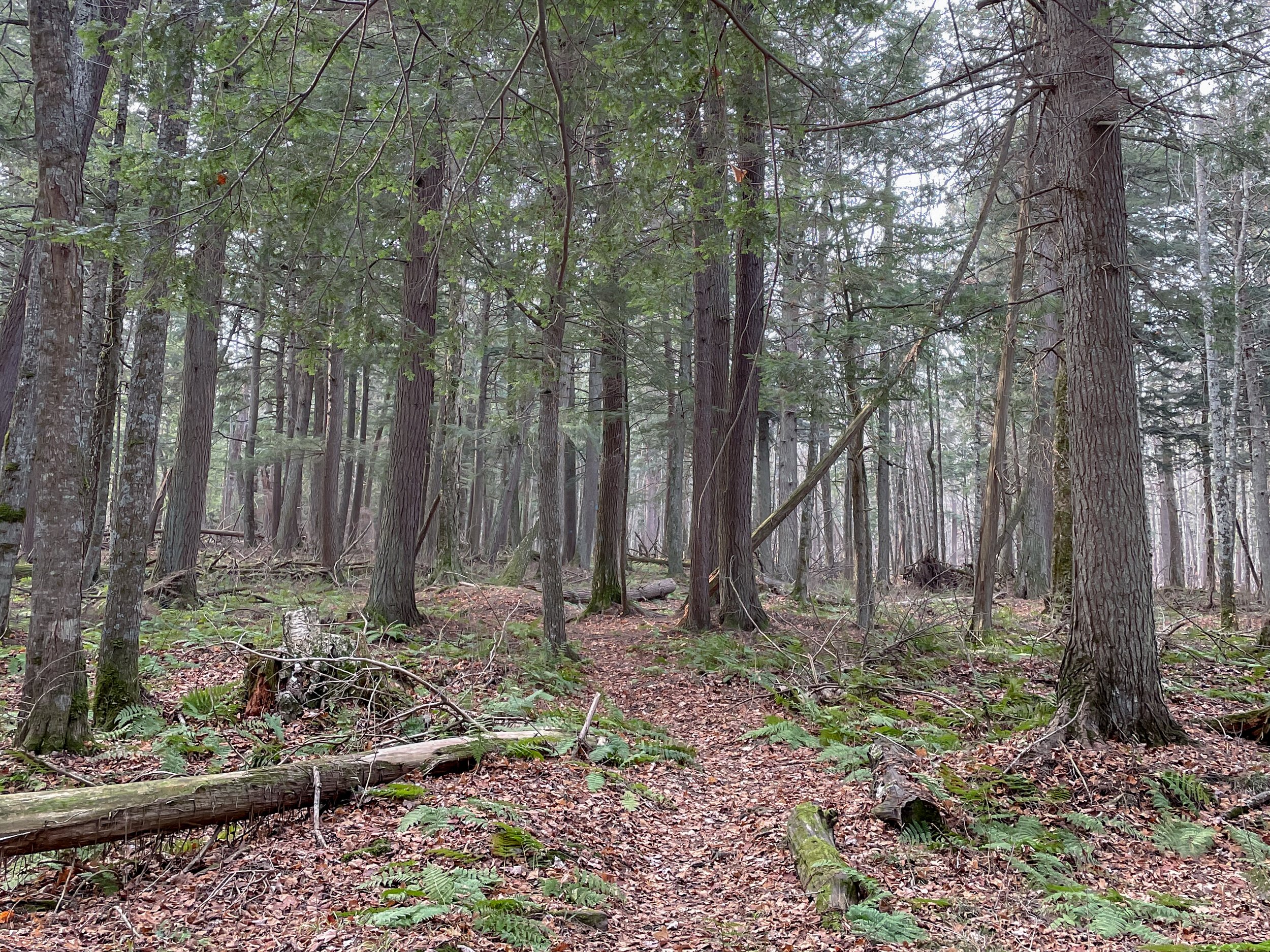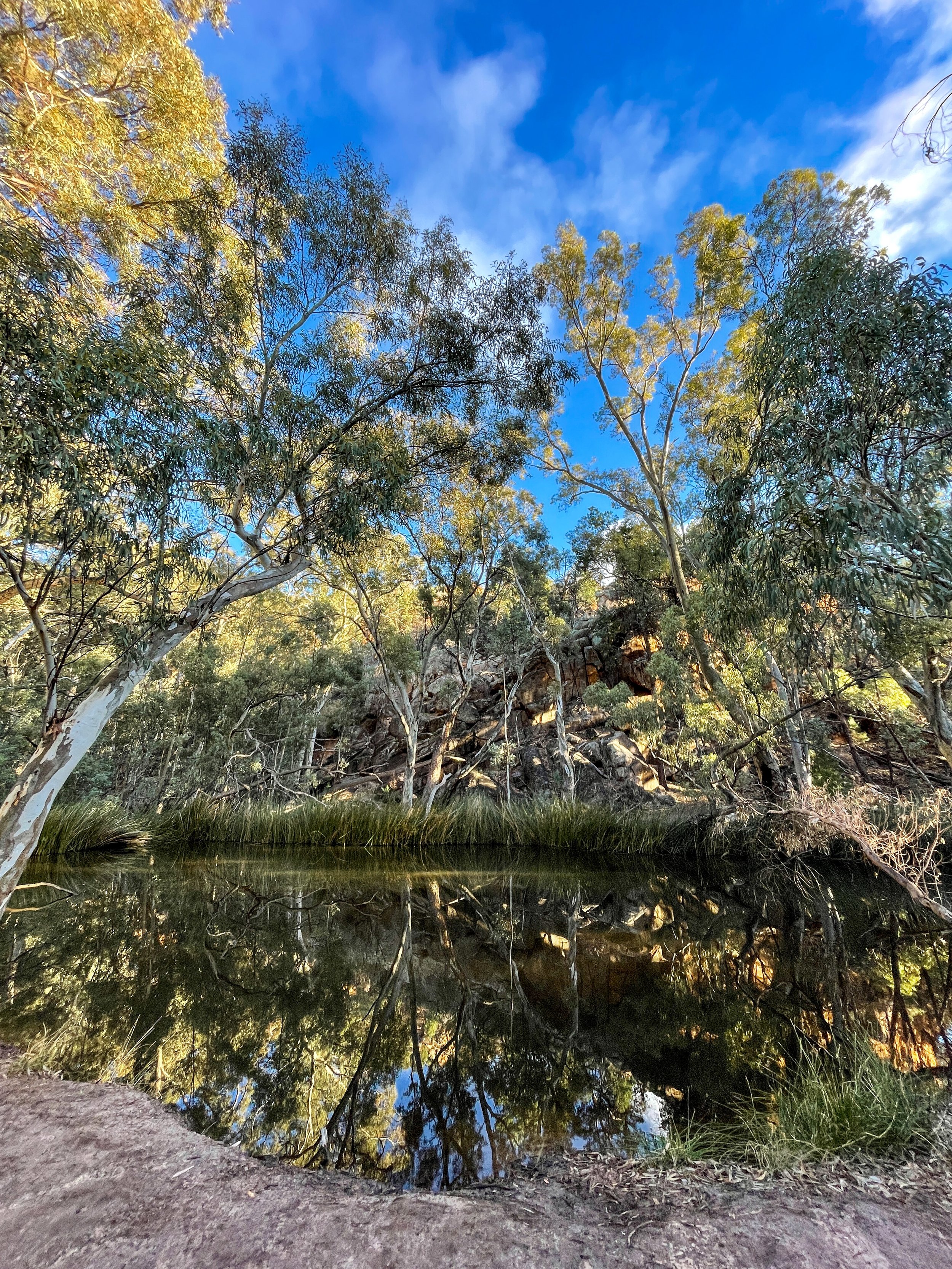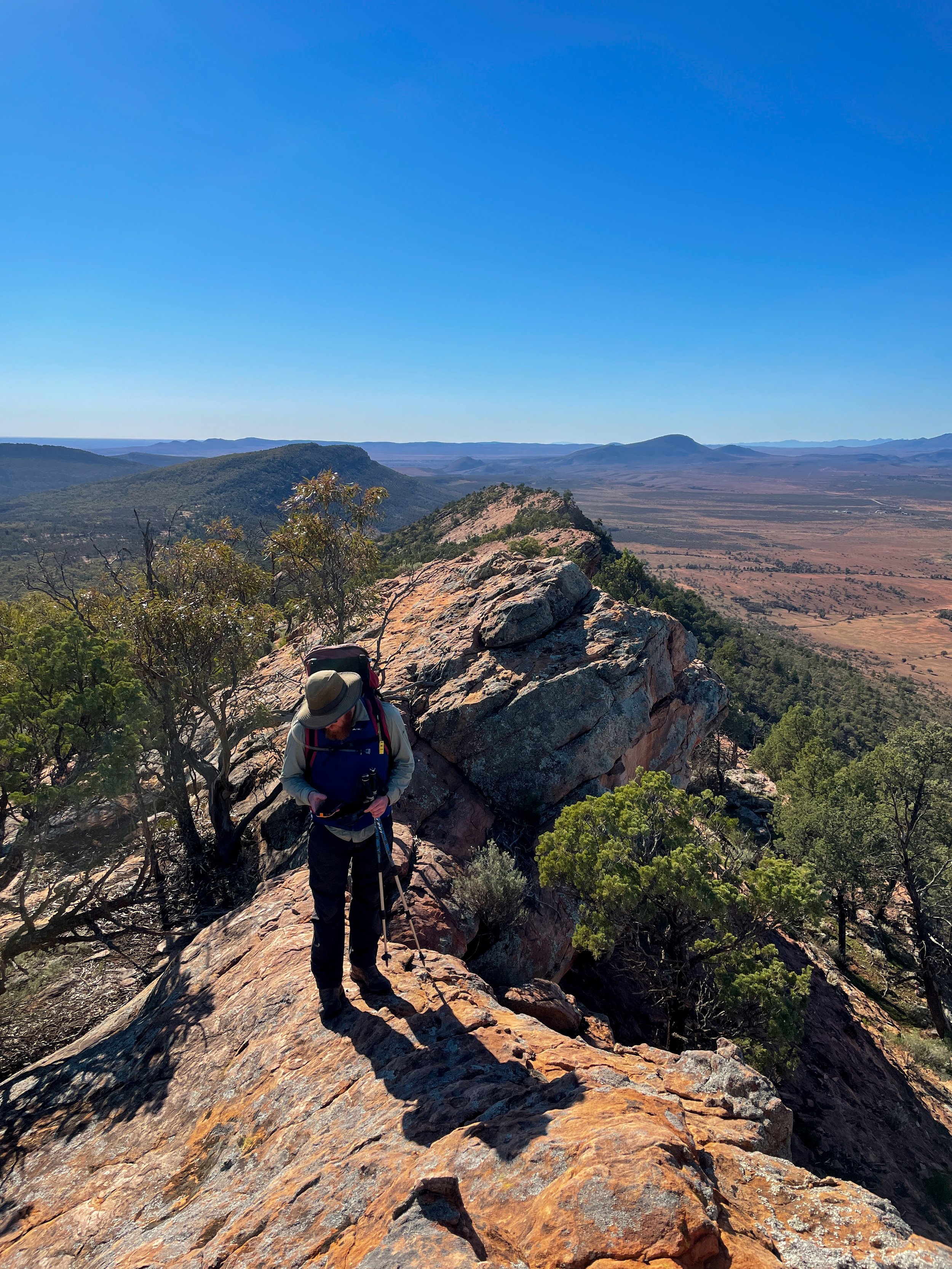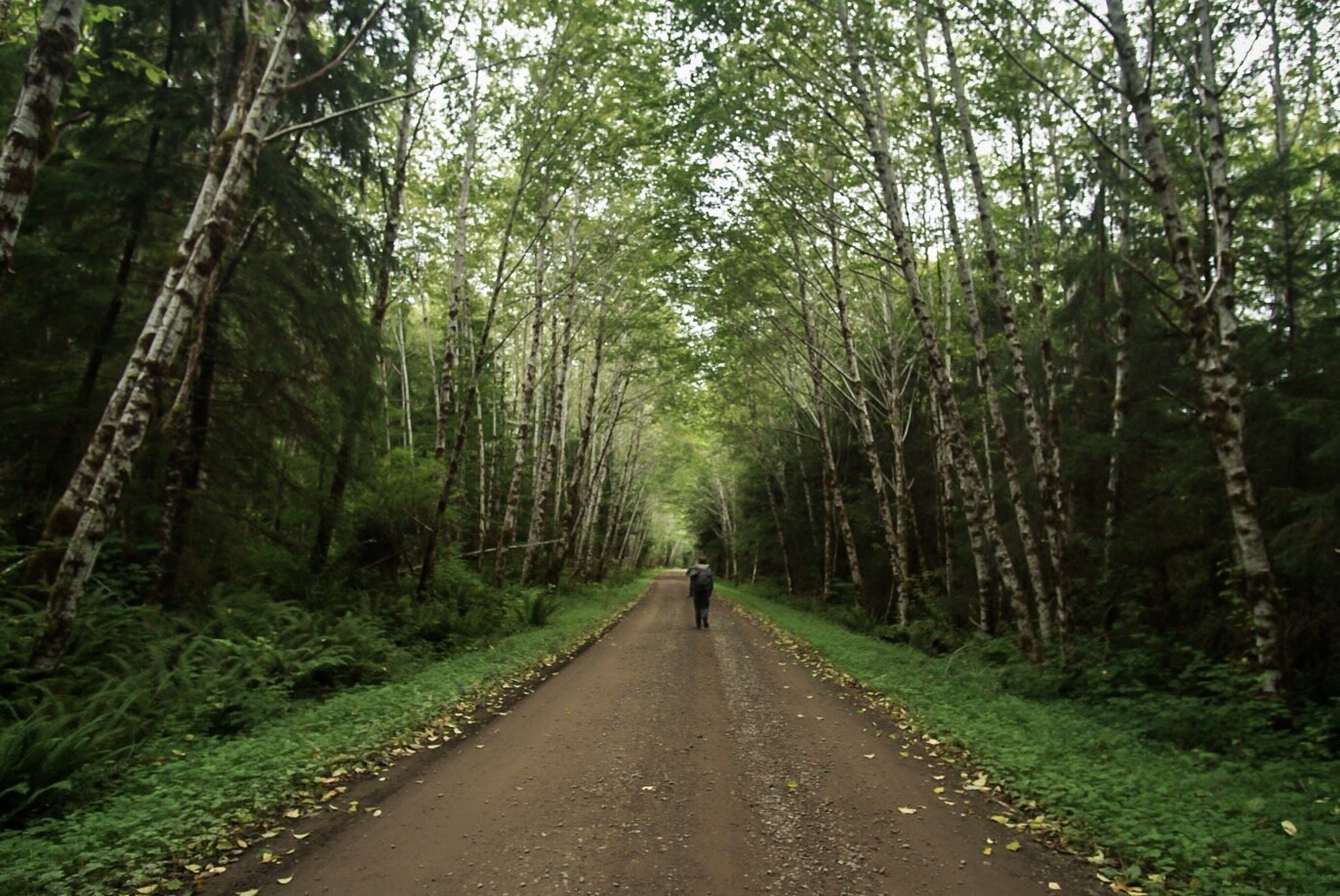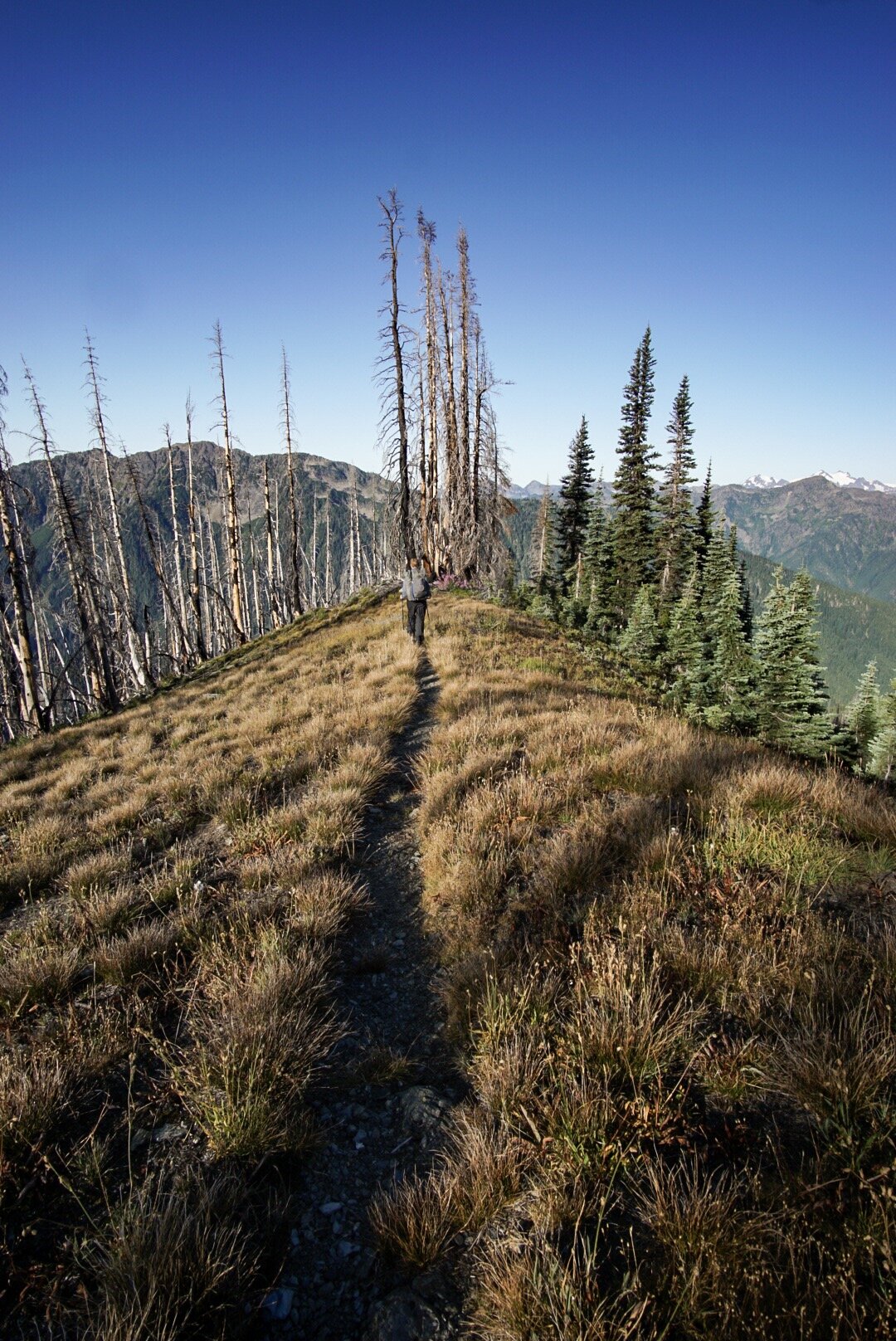If you want a minimal effort, maximum backwoods fun trip Speaker’s Cabin has you covered.
It’s just under a mile walk to your own private cabin on Lake Superior. You can’t really go wrong with any cabin in the Porkies, but Speakers Cabin, IMO, has the best view, the easiest walk-in, and privacy.
The last time I was here was 6 years ago. For the most part, it’s the same setup. There was a flood of Speaker’s Creek in 2016 which caused erosion along the creek edge. After this, the cabin was moved back 20 feet from the creek to avoid future floods. The great news, the zombie flies I mentioned before have abated significantly.
This weekend we are here with 2 other friends putting us at the 4 person limit. Speakers is a nice size for 4. Space to cook, a woodstove for heat, a big table, and 4 bunks. Wood for the fire is gathered from around the cabin. Thankfully the last group left us a decent amount of dry wood and we returned the favor for the next group.
Although I've yet to use it, my favorite part is the fire ring overlooking Lake Superior. On a cool night, it would be epic to watch the stars or northern lights around the fire. In the summer, the creek and lake would be great for swimming.
The downside of Speakers is that it’s a bit cut off from the main trail system. It’s possible to hike anywhere in the park from the North Country Trail, the trail running by the cabin, but getting to the heart of the park is a long journey.
On the flip side, Speaker’s Cabin is the closest cabin to the Presque Isle side of the park. Personally, I highly recommend the hike from the cabin to the Presque Isle River and the waterfalls through the Hemlock forest. The trail from the cabin to the falls is lightly traveled through the moody forest. At approximately 5 miles round trip, it's a nice length to pack a picnic and lounge around the falls area.
Links:
Speakers TH (Google Maps)
Route to cabin (Gaia GPS)
Day hike to Presque Isle River (Gaia GPS)
Backcountry Map (MI DNR)
Porcupine Mts Website (MI DNR)
